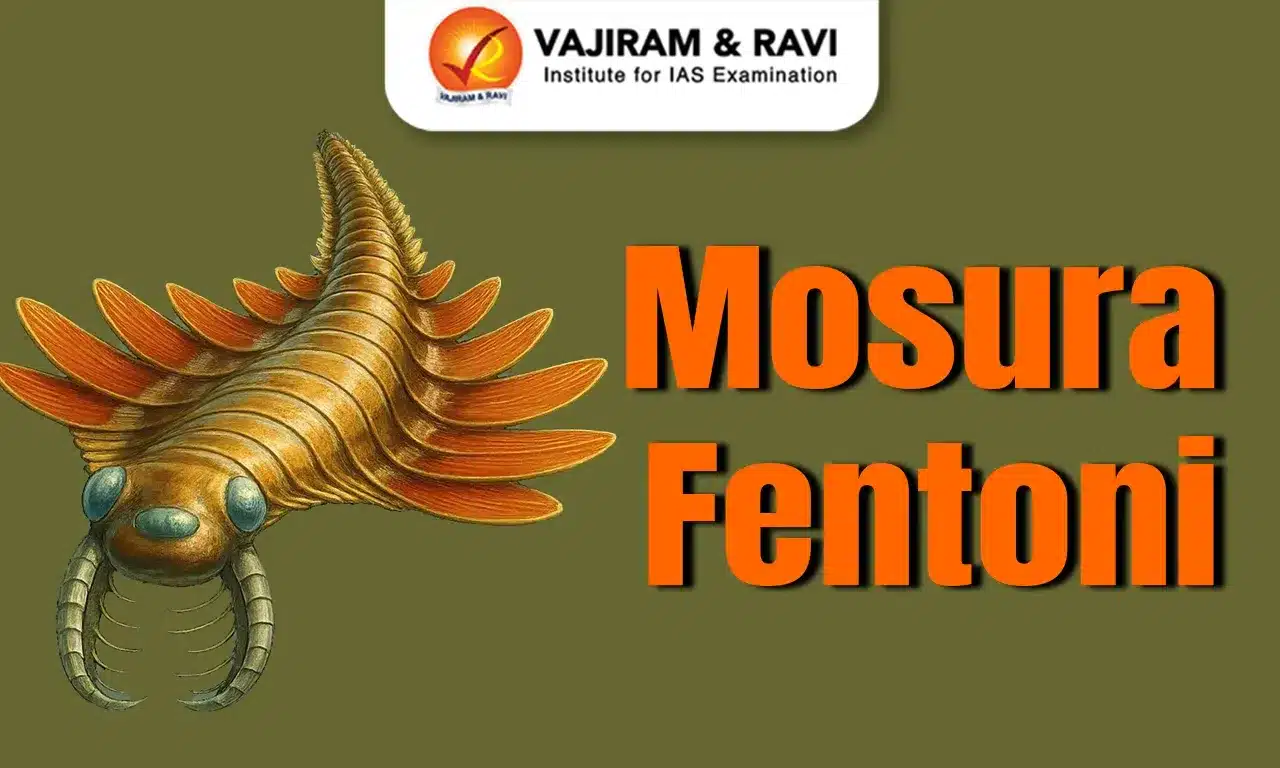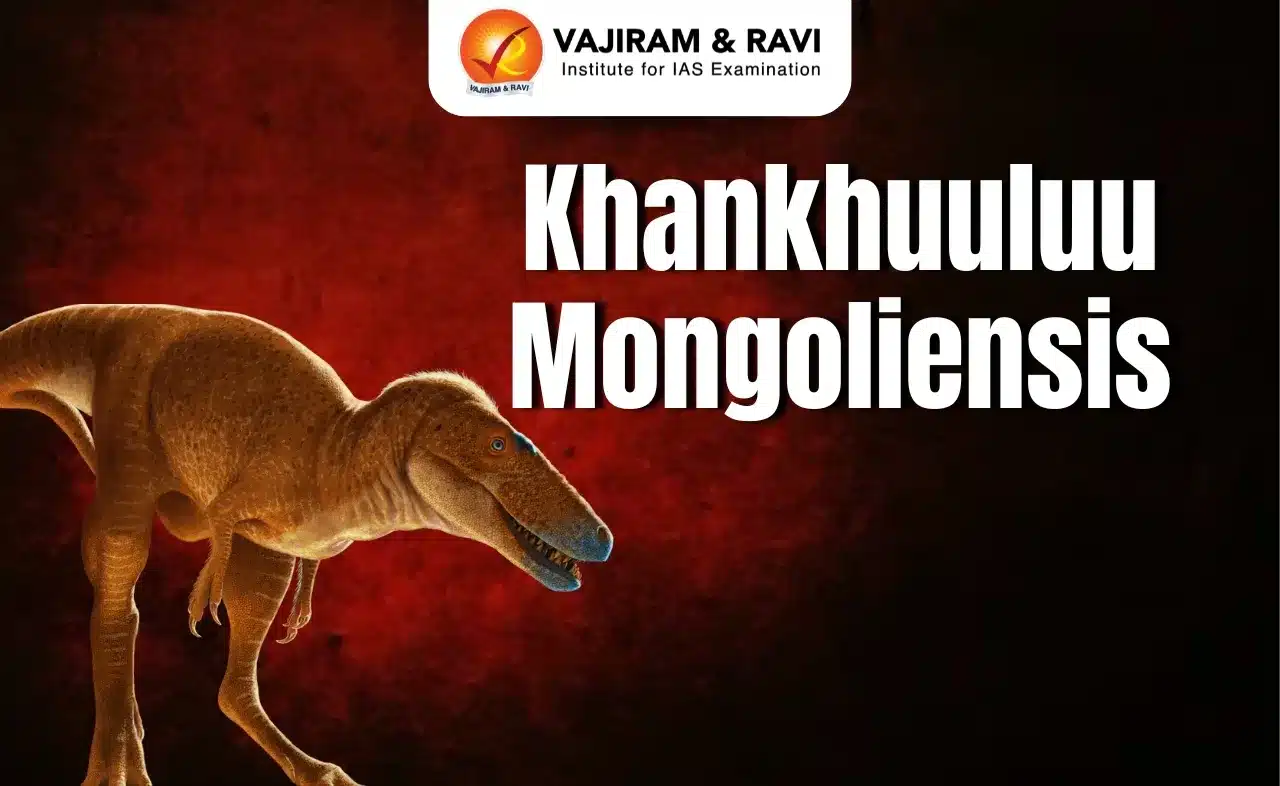Mosura fentoni Latest News
Scientists recently identified a new extinct species, Mosura fentoni, an early marine predator from around 506 million years ago during the Cambrian period.
About Mosura fentoni
- Mosura fentoni is a newly discovered Cambrian marine organism found in the Burgess Shale, a globally significant fossil site in British Columbia, Canada.
- It belongs to the group Radiodonta, which are extinct stem-group arthropods, distant relatives of modern insects, spiders, and crustaceans.
- Despite being a small-sized species (ranging from 1.5 to 6 cm), M. fentoni displays highly specialised anatomical adaptations.
Unique Morphological Features
- The body of Mosura fentoni is unusually elongated, with a division into three distinct zones comprising a total of 26 segments:
- A short neck region that supports the head,
- A mesotrunk consisting of six paddle-shaped flaps that function as propulsive organs for swimming,
- A posterotrunk containing up to 16 segments dominated by rows of fine gills.
- The posterotrunk is proposed to be a specialised breathing tagma, drawing parallels to the oxygen-collecting tails of modern horseshoe crabs, suggesting a highly evolved respiratory mechanism in this ancient organism.
Geological and Paleontological Context
- The fossil belongs to the Cambrian period, which began around 540 million years ago, following the Precambrian-Cambrian boundary (600–540 Ma).
- This period witnessed the Cambrian Explosion, also known as the Cambrian Big Bang, marked by the sudden emergence of complex animal life with hard body parts.
- The transition from soft-bodied Ediacaran fauna to skeleton-bearing Cambrian organisms represents a major biotic shift in Earth’s history.
- Changes in the carbon (C) and strontium (Sr) isotopic composition of rocks during this period aid in the stratigraphic correlation of Proterozoic-Cambrian boundaries.
Mosura fentoni FAQs
Q1: What is Mosura fentoni?
Ans:Mosura fentoni is a newly discovered extinct marine species from the Cambrian period, dating back around 506 million years, known to be an early marine predator.
Q2: Where was Mosura fentoni discovered ?
Ans: It was found in the Burgess Shale of British Columbia, Canada.
Q3: Which group does Mosura fentoni belong to?
Ans: It belongs to the Radiodonta, a group of extinct stem-group arthropods, which are distant evolutionary relatives of modern insects, crustaceans, and arachnids.
Source: TH
Last updated on June, 2025
→ UPSC Notification 2025 was released on 22nd January 2025.
→ UPSC Prelims Result 2025 is out now for the CSE held on 25 May 2025.
→ UPSC Prelims Question Paper 2025 and Unofficial Prelims Answer Key 2025 are available now.
→ UPSC Calendar 2026 is released on 15th May, 2025.
→ The UPSC Vacancy 2025 were released 1129, out of which 979 were for UPSC CSE and remaining 150 are for UPSC IFoS.
→ UPSC Mains 2025 will be conducted on 22nd August 2025.
→ UPSC Prelims 2026 will be conducted on 24th May, 2026 & UPSC Mains 2026 will be conducted on 21st August 2026.
→ The UPSC Selection Process is of 3 stages-Prelims, Mains and Interview.
→ UPSC Result 2024 is released with latest UPSC Marksheet 2024. Check Now!
→ UPSC Toppers List 2024 is released now. Shakti Dubey is UPSC AIR 1 2024 Topper.
→ Also check Best IAS Coaching in Delhi
Tags: Mosura fentoni Prelims Pointers upsc prelims current affairs






















